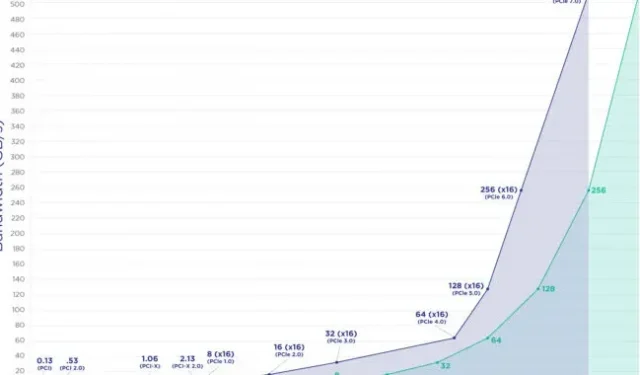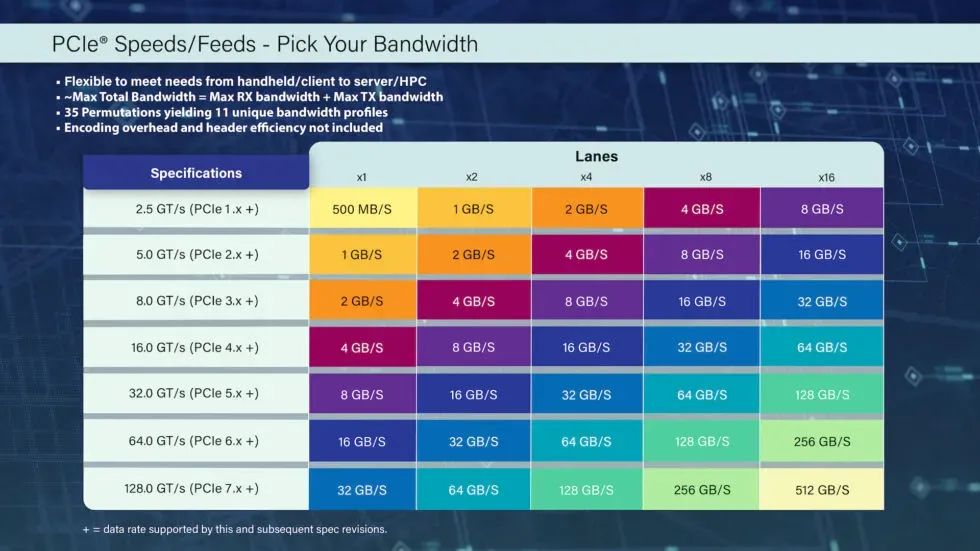Months after finalizing PCIe 6.0, PCI-SIG hopes to double the speed again with PCIe 7.0.

The PCI-SIG, which is responsible for developing and updating the PCI Express standard, aims to update the standard approximately every three years. Version 6.0 was released earlier this year and the group announced that PCIe version 7.0 is currently on track for completion sometime in 2025. Like all new versions of PCI Express, its goal is to double the available bandwidth compared to the previous version, which in 7.0 means a single PCIe 7.0 lane will be able to transfer data at up to 32 GB per second.
That’s double the 16GB per second promised by PCIe 6.0, but it’s even more astounding compared to PCIe 4.0, the version of the standard used today in high-end GPUs and SSDs. A single PCIe 4.0 lane provides about 4 GB of bandwidth per second, and you need eight of those lanes to provide the same speeds as a single PCIe 7.0 lane.

The increase in speed opens the door for even faster GPUs and storage devices, but this big boost in bandwidth will also allow you to do the same amount of work with fewer PCIe lanes. Modern SSDs typically use four PCIe lanes, while GPUs typically use 16 lanes. You can use the same number of lanes to support more SSDs and GPUs while providing a significant increase in throughput over today’s accessories, which can be especially useful for servers.
As with all previous versions of the PCIe standard, PCI-SIG states that PCIe 7.0 devices will remain fully backward compatible with older PCIe versions. There is some encoding overhead that will prevent real accessories from reaching the full 32 GB per second speed promised by PCIe 7.0, but this is true for all versions of PCIe.
It will be a year or two before we see PCI Express 6.0 in consumer PCs, let alone 7.0. The latest 12th generation Intel Alder Lake processors include a limited number of PCIe 5.0 lanes, and PCIe 5.0 will also become part of the AMD Ryzen 7000 series later this year. But consumer GPUs and SSDs using PCIe 5.0 don’t exist yet. Most new standards take years to go from “draft”to “finished”to “available in shipping products”to “ubiquitous”and the new PCI Express versions are no exception.
Leave a Reply